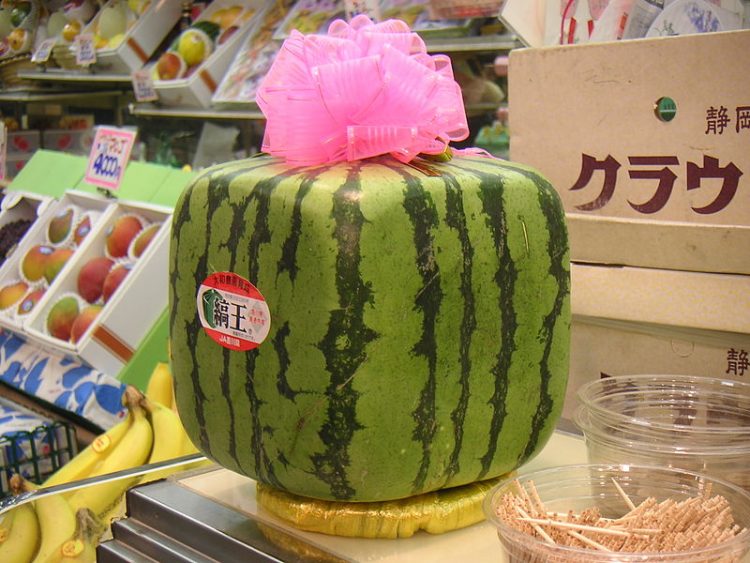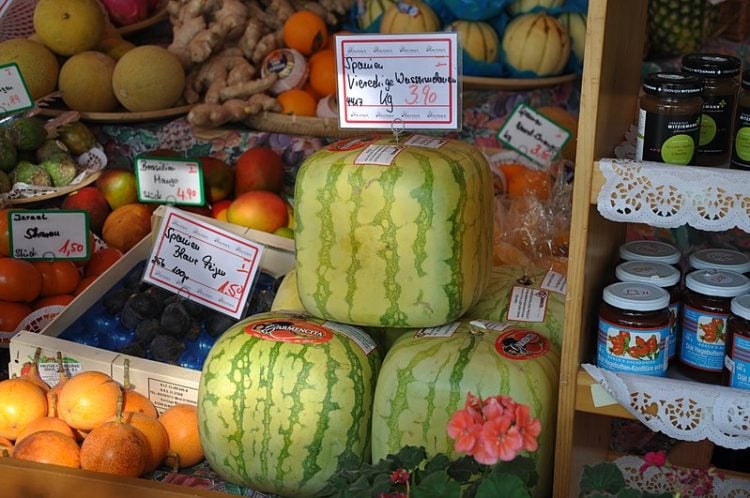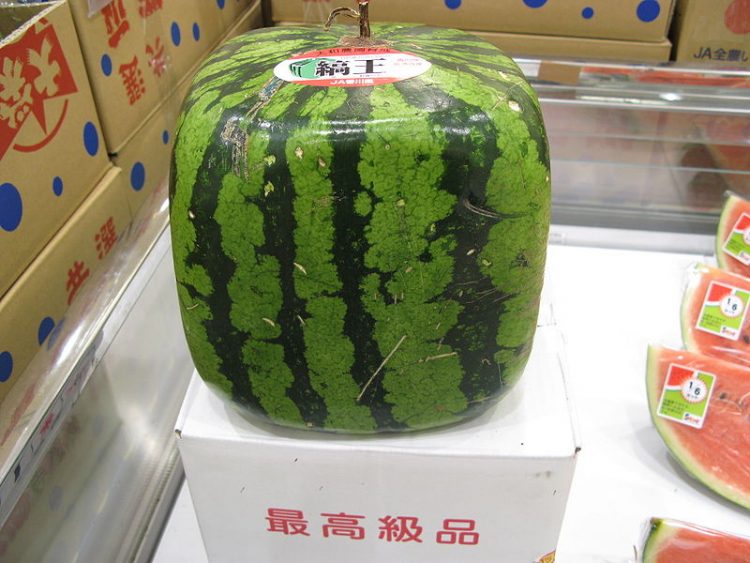Unless you’ve been living under a rock for the past decade or so, you’ve probably seen pictures of Japan’s square watermelons doing the rounds online. I know I have, but what I never knew was that these weird-looking fruit are basically inedible.
Perfectly sized and shaped fruits are big business in Japan, and it’s not uncommon for the rarest and most coveted varieties to sell for thousands of dollars a piece. Back in 2016, a supermarket owner made international news headlines after paying $11,000 for a bunch of Ruby Rose grapes, the world’s most expensive grape variety. But it’s not just grapes, specialty fruit shops charge hundreds, even thousands of dollars for fruits of all types, which may seem strange, but it is closely tied to Japanese culture. Rare and expensive fruits are traditionally offered as gifts to clients, business partners or relatives, and people will gladly spend a small fortune on a single fruit just to show their respect for someone. But while most of these expensive fruits can be savored by the recipient, there is one that has a purely decorative purpose – square watermelons.

Photo: Laughlin Elkind/Flickr
Developed about 50 years ago by farmers in Takamatsu, Japan’s Kagawa Prefecture, as a way to raise their community’s profile among the country’s farmers, square watermelons have become both an iconic symbol of Japan and a very valuable commodity. It’s not uncommon for these unusually shaped watermelons to be sold for around $100 apiece, much more than what a regular watermelon of the same variety would fetch. Rather peculiar, especially considering that square watermelons aren’t even edible, let alone tasty.

Photo: Francisco Antunes/Flickr
“This fruit is meant to be a feast for your eyes, but they don’t taste very good,” luxury fruit shop manager Mototaka Nishimura said. “They should be displayed as ornaments, maybe mixed with flowers.”

Photo: rumpleteaser/Flickr
Square watermelons are grown in special acrylic boxes, and in order for them to attain and maintain the desired shape for the longest possible time, they are not allowed to mature, so they are not what you would call tasty. Still, if you plan on buying one such fruit, you should know that they can last up to a year.
While in most of the western world the taste of fruits is definitely the main quality people look for, in Japan, there are those for whom geometrical shape is infinitely more important. So much so that taste is forfeited completely.






